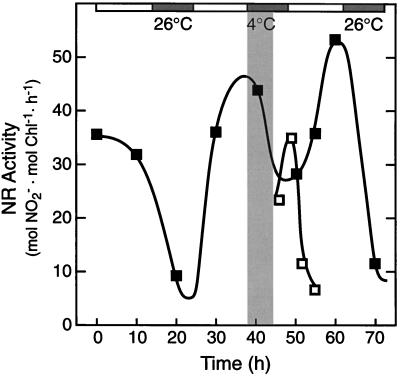Figure 7.
Low-temperature treatment delays the circadian rhythm controlling NR activity. The light and dark bars above the figure represent day and subjective night periods, respectively. A low-temperature treatment (4°C), represented by the shaded area in the main body of the figure, was imposed for 6 h, between h = 38 and h = 44. After rewarming, NR activity was assayed under in vitro conditions in the absence of Mg2+ (□). Comparison of the reference circadian rhythm (▪) and the postchilling oscillation (□) demonstrates that the 6-h low-temperature treatment delayed the oscillation in NR activity without Mg2+ (i.e. NR protein level). The experiment was repeated several times with consistent results. Chl, Chlorophyll.

